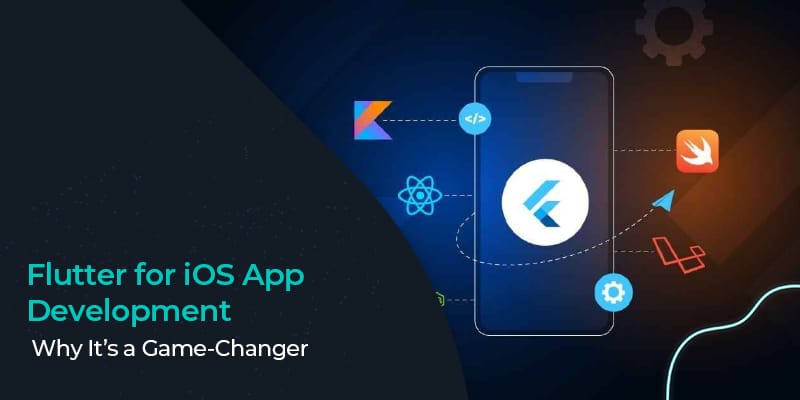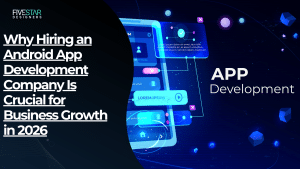If you’re an app developer juggling two projects—one for iOS and another for Android with tight deadlines and clients demanding quick results, and you’re tired of maintaining two separate codebases. Maybe it’s time you Flutter up!
Flutter is Google’s open-source UI framework that’s completely changing the game for iOS app development. Let’s break down why Flutter might just be your new best friend.
Why Flutter is a Developer’s Dream for iOS Apps
1. Single Codebase To Rule It All
Flutter allows app developers to create apps for both Android and iOS with just a single codebase. This is a dream come true for app development agencies as they get to save time and resources by avoiding duplication and maintaining efforts for two different platforms. Write once, deploy everywhere—sounds like a dream, right?
2. Hot Reload: The Developer’s Superpower
Imagine tweaking your app’s UI and seeing the changes instantly, without restarting the app or losing your current state. That’s Hot Reload for you. It’s like having an “undo” button for app development, which alone, saves countless tiring hours of development time.
3. Defying Performance Myths
In the tech world, it’s a common belief that “if it’s not native, it’s not worth it” but that is not true here for cross-platform frameworks as Flutter defies the norms and brings buttery smooth native-like experience with its custom Skai rendering engine.
Why Mobile App Development Companies Should Opt For Flutter?
1. Snappy Development
Flutter in many ways, can save a lot of time and effort along with resources which is what practically any app development company would want. The hot reload and single codebase along with so many more features allow for faster app development time which means you get to meet that dreadful deadline.
2. Identical UI Across Both Platforms
Just like drawing a single sketch twice exactly identical to each other is near impossible, the same goes for developing an app for two platforms with uniform experiences. But with Flutter you can’t really go wrong with it. The same codebase promises the exact same UX/UI for both iOS and Android.
3. A Booming Community
Flutter boasts a thriving community of app devs ready to offer a wealth of knowledge and resources with invaluable assistance. One of the many reasons behind the Flutter framework’s popularity and success is the vibrant ecosystem that fosters collaboration and knowledge sharing, making it easier for developers to overcome challenges and learn new skills.
Flutter Against The World
Since it’s not fair to toot the horn of a product without actually comparing it to any of its competitors, let’s see how Flutter matches against others.
1. Flutter v Swift
Swift is Apple’s native language for iOS app development, and it’s fantastic for building high-performance apps. But here’s the catch: if you’re also building for Android, you’ll need a separate codebase. Who likes extra work?
2. Flutter v React Native
React Native is the direct competitor of Flutter in the cross-platform development world. However, Flutter has a few tricks up its sleeves that give it an edge over React Native.
For starters, Flutter’s performance is better because it doesn’t rely on a JavaScript bridge. Plus, Flutter’s widget system gives you more control over the UI, making it easier to create custom designs.
Quick Guide To Build an iOS App with Flutter
Although a guide to developing an app requires a whole different in-depth blog, with Flutter, the process is so easy that we can give you a quick overview of the Flutter way.
1. Set Everything Up
First and foremost, you need to install the Flutter SDK and Xcode (for iOS development). You’ll also require an IDE like Visual Studio Code or Android Studio. Once everything’s up and running, you’re ready to roll.
2. Rapid Project Creation
Kickstart your Flutter project in seconds with the CLI. A single command generates the essential project scaffolding, including the main file and configuration settings, providing a solid foundation.
3. Your UI Is Your Canvas
With Flutter’s widgets, designing a beautiful UI is a breeze. Whether you’re building a simple landing page or a complex dashboard, Flutter gives you the tools to create exactly what you need.
4. Core Logic Implementation
Once your UI is in place, it’s time to add the app logic. Flutter’s reactive programming model makes it easy to manage state and respond to user interactions, ensuring a smooth and responsive user experience.
5. Test and Deploy
App testing before launch can oftentimes be frustrating and time-consuming. Flutter’s built-in testing tools make it easy to identify and fix issues. Once your app is ready, deploy it to the App Store and start reaching your audience.
Conclusion
Flutter is more than just a framework—it’s a movement. With ongoing improvements in performance, tooling, and community support, Flutter is poised to become the go-to choice for iOS app development. Embracing Flutter now means staying ahead of the curve and delivering apps that are not only functional but also visually stunning and highly performant.
So, if you’re ready to take your iOS app development to the next level, it’s time to give Flutter a try. The results might just surprise you.




